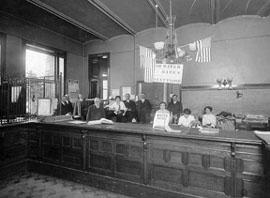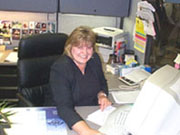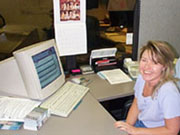Bulletin Board
Customer Service -- Customer Satisfaction
April 25, 2000
|
|
Introduction
Utility customer service has come a long way over the years. Today, customer satisfaction is absolutely essential in operating a public utility. Customers count. They want quality service, and they deserve it.
Superior customer service requires modern, professional skills. Working with the public requires friendly, courteous and caring employees. These attributes foster customer satisfaction, which is our primary goal. The Department's Mission Statement clearly states that "customer focus and customer satisfaction" are the core values of the organization. Sometimes a situation cannot be totally resolved to the customer's satisfaction, but hopefully the manner in which it is handled, will be satisfactory. "This is the trend of the future," says Sybilla Dalton, Customer Service Supervisor, who recently attended an American Water Works Association Customer Service training conference. She continues, "The water profession is realizing that it is no longer a monopoly and must compete for its customers.” This was the message given to the several hundred customer service professionals at the conference. "I felt very comfortable with this philosophy as this organization embraces it," avers Dalton. “We need to continue to provide quality services for our customers –
|
|
Customer Service Technology
Today's customer representatives have modern technology to help them provide quality service. They have access to complex billing screens on their computers, with detailed information on each account. Modern telephone systems and faxes generated from the terminals of each workstation speed up the communication of information. It’s a far cry from just a few years ago. Before computerized billing, meters were read and bills prepared by hand. The accounting employee could well have been stereotyped with sleeve protectors up to the elbow and the small opened crown cap with green shades. Customers didn’t pay by checks, credit cards and automatic payments; cash payments were common. Today, customers can view their billing records on the Internet, and pay them using the same medium.
An important part of customer service is meter reading. In the 1920’s, the meter readers were given a trolley token to get to their routes. Reads were taken every quarter – today meters are read every month. Customers want accurate readings. Besides the convenience of accurate billing for service, this frequency also detects leaks in the meter boxes and/or on the customer's side of the meter. Repairs can be made earlier resulting in lower bills for the customers and water saved.
Customer Service Information
|
|
Moreover it takes a special personality and temperament to deal with the customer issues. "Employees who choose to be customer service representatives enjoy working with people and solving problems," says Anna Wilson, Customer Service Manager. However she adds, "Sometimes it takes it toll on employees when they are under stress over a period of time. Working all day in an office setting, dealing with the same problems, day in and day out requires a change." In order to relieve this stress, employees are rotated from the telephones to the cashier's booth or to dealing with walk-in customers to help alleviate the stress of the telephone.
Customer Feedback
|
|
Water Assist
Customer service representatives can help qualifying customers with Water Assist. The assist program is funded by customer donations and administered by the American Red Cross, Greater Salt Lake Area Chapter. If a customer qualifies for the County tax abatement program he or she automatically qualifies to receive the maximum amount of $200 per year towards their account. Currently, in order to be eligible for Water Assist a customer must be at 150 percent of poverty level and/or have a family member who: 1) has a verifiable medical emergency, 2) is age 60 or over, 3) is disabled, or qualifies for the County Tax Abatement Program. According to Anna Wilson, "This program allows us to offer assistance to customers who genuinely want to be responsible for their utility bills, but because of circumstances beyond their control need help on a temporary basis." Questions regarding the Water Assist and County Tax Abatement programs can be answered by calling a customer service representative at (801) 483-6900.
Conclusion
Customers and technology are in constant change. Today’s utility must be capable of continuous improvement at the same pace, if it is to continue to provide quality service and satisfy its customers. What was adequate last year will not be adequate this year. With full understanding of our changing business environment, we have the opportunity to succeed in the future.
Questions regarding this article can be e-mailed to: anna.wilson@ci.slc.ut.us



